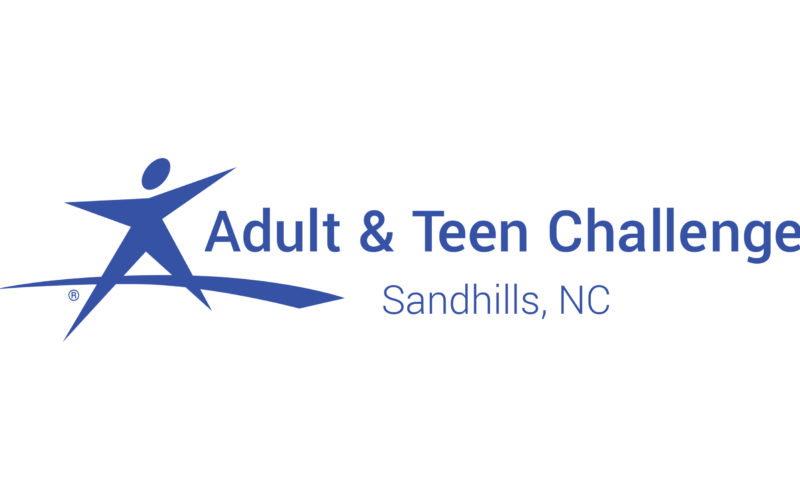Brian told the rest of his story.
Brian came out of rehab clean but not committed. He sought drugs immediately. He had become an expert at deception, staying just ahead of getting caught by his family and friends. He had learned how to beat the system and fake the drug tests. In seven months, he had lost another girlfriend, another forty pounds, and a future. Desperate to find a life, he switched to Tamerol, an accepted synthetic opioid, and enlisted in the Navy.
The night before his deployment, he was arrested.
Brian said he landed in “God’s campus,” a thirty-one-acre compound in Moore County, NC, called Adult and Teen Challenge of Sandhills, NC. This is a life and lifestyle ministry that replaces addictive behavior with salvation. Brian’s experience with other rehab centers modified his behavior but did not remove his motivation. Brian was lucky; he had a strong family that intervened and an inspiring mentor willing to invest in his success.
Typical recovery programs throughout the US treat addiction with drugs. Few facilities exist that can keep patients for extended resident therapy. The irony is that the drug therapies used to treat addiction are addictive. Methadone, the most common drug used to detoxify an addict, affects the brain and nervous system’s response to pain, mitigating the horrible consequences of opioid withdrawal. But Methadone has some nasty side effects and must be taken every eight to ten hours to be effective. Traces of Methadone can remain in the body’s system for days, weeks, and even months, appearing in sophisticated drug tests. The style and stigma of addiction remains with the patient forever.
Suboxone, a combination of buprenorphine and naloxone, also used in the treatment of opioid addiction, has an equally terrifying list of side effects that include life-threatening breathing problems and physical dependency. Subutex is the other popular chemical treatment for drug addiction with similar side effects, dependency issues, and withdrawal complications.
Why this downward spiral of cocaine, OxyContin, Vicodin, Methadone, and back to Oxy, given the knowledge that most street drugs are laced with fentanyl? An addict will seek the strongest high on the street. He will risk death to get that experience and will praise an overdose victim for having had a great drug. Getting off Oxy requires signing on to treatment with another form of addiction that is more expensive and time-consuming when supervised in a clinic. It soon becomes easier to fall back into the cheaper, more prevalent, more satisfying drug of choice.
Another contributing factor to rampant drug abuse is the social acceptance of chemicals to modify or correct medical or physical ailments. Consider Adderall. This behavior modifier is commonly prescribed for ADHD. A patient can be assessed and treated online for free. This drug is an amphetamine blend with a list of twenty-five known side effects that require medical attention. It is reported that one in ten school-aged children is diagnosed with ADHD, a brain-based disorder impacting a child’s ability to focus. Children as young as six are introduced to this therapy. This is an acceptable, even desirable, behavior modification tool that encourages addiction.
Revisit Adult and Teen Challenge. It is here that instructors and mentors understand when an illegal substance is removed, it must be replaced with something of value. Here the patient is stripped of his addict identity. He is now a child of God, protected by faith. He is required to learn how to live and love in this framework. He is taught how to pray and how to ask for and receive forgiveness through confession with a specific toolkit to assist him.
This campus has four dormitories, a gym, a carpentry shop, an auto mechanic bay, computer and tech instruction, bible study, self-care, and discipline. This campus does not have Methadone, Suboxone, or Subutex. This campus has inspirational instruction and supervision by a team of dedicated and compassionate leaders, some of whom, like Brian, have been residents of this campus. Patients commit to nine months of residency, vocational study, and work-related maintenance. Patients are admitted after detox and spend the first month away from family in intense counseling. In the following months, the patients absorb a new identity, learn skills to enter the workforce, and find the true purpose of life.
If a graduate of Adult & Teen Challenge needs a reminder, there is a thirty-day restoration available for him.
Brian is now the Assistant Program Director for Adult & Teen Challenge. He spends his days sorting out the needs of his patients and his nights rescuing addicts from the street. His wife, a psychotherapist, and his son are active supporters on the campus. Around the grounds, the staff offers a kind of joy seen only in people who are living their life’s calling.
This campus does not have a fence; it has a heart.
Connie Lovell lives in Pinehurst.




